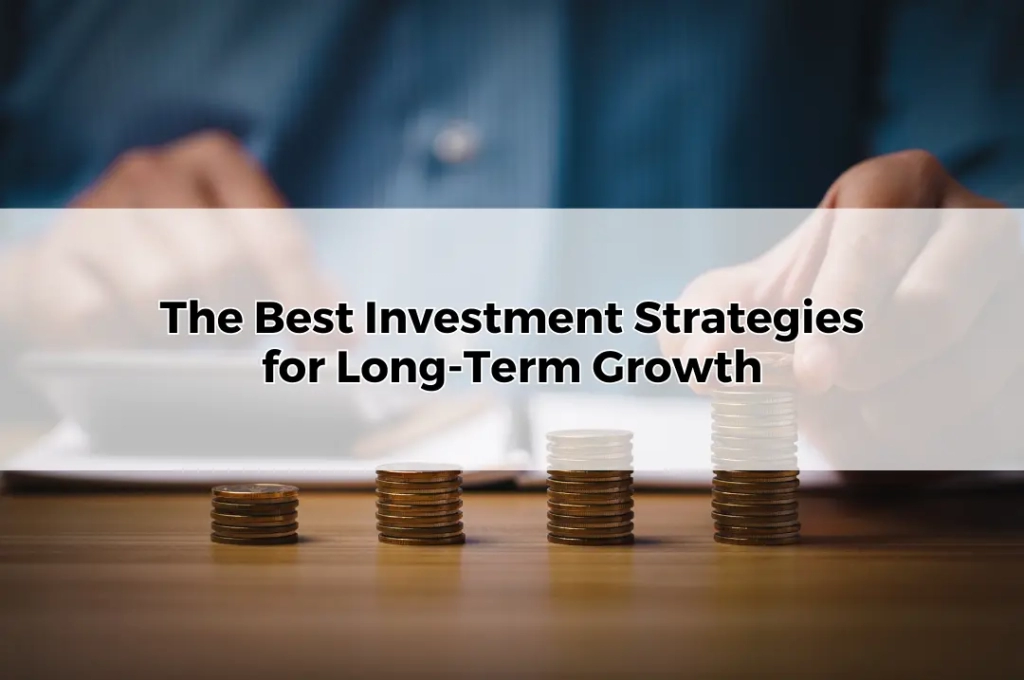The Best Investment Strategies for Long-Term Growth
Table of Contents
ToggleCrafting an investment strategy geared towards long-term growth is essential for building wealth and ensuring financial stability. With a plethora of investment options available, understanding which strategies provide the best potential for sustained growth can be daunting. This article delves into the most effective investment strategies that can help you achieve long-term financial success.
Understanding Long-Term Growth
Definition and Importance
Long-term growth refers to the increase in the value of investments over an extended period, typically several years or decades. This approach focuses on capital appreciation and compounding returns, making it a cornerstone of prudent financial planning.
Benefits of Long-Term Investing
Investing for the long term offers numerous benefits, including the ability to ride out market volatility, capitalise on compounding returns, and achieve significant capital growth. This strategy reduces the impact of short-term market fluctuations and provides a stable path to wealth accumulation.
Diversification
What is Diversification?
Diversification is the practice of spreading investments across various asset classes, sectors, and geographic regions to mitigate risk. By not putting all your eggs in one basket, you reduce the potential negative impact of a single underperforming investment.
Benefits of Diversification
Diversification enhances the stability of your portfolio by balancing potential losses with gains from different investments. This strategy ensures a smoother investment journey and increases the likelihood of achieving long-term financial goals.
Asset Allocation
Importance of Asset Allocation
Asset allocation involves distributing investments across different asset categories such as shares, bonds, and real estate. This strategy is crucial for managing risk and optimising returns based on your financial goals, risk tolerance, and investment horizon.
Strategies for Effective Asset Allocation
Effective asset allocation requires a thorough understanding of your financial objectives and risk appetite. Regularly review and adjust your allocation to maintain a balanced portfolio that aligns with your long-term goals.
Stock Market Investments
Blue-Chip Shares
Blue-chip shares are shares of well-established companies with a history of reliable performance and dividend payments. These shares offer stability and are a solid foundation for a long-term growth strategy.
Growth Shares
Growth shares represent companies expected to grow at an above-average rate compared to other firms. While they may not pay dividends, their potential for substantial capital appreciation makes them attractive for long-term investors.
Dividend Shares
Dividend shares provide regular income through dividends, in addition to potential capital gains. Reinvesting these dividends can significantly boost your overall returns over time.
Bonds and Fixed Income Securities
Types of Bonds
Bonds are debt securities issued by corporations or governments. They come in various forms, including treasury bonds, municipal bonds, and corporate bonds, each with different risk and return profiles.
Benefits of Fixed Income Investments
Fixed income investments offer predictable returns and lower risk compared to shares. They are essential for diversifying your portfolio and providing a steady income stream, especially during market downturns.
Real Estate Investments
Direct Real Estate Investment
Investing directly in real estate involves purchasing residential or commercial properties to generate rental income and potential capital appreciation. This strategy requires significant capital and management effort.
Real Estate Investment Trusts (REITs)
REITs allow you to invest in real estate without owning physical properties. They provide liquidity, diversification, and regular dividend income, making them a convenient option for long-term growth.
Mutual Funds and ETFs
Advantages of Mutual Funds
Mutual funds pool money from multiple investors to invest in a diversified portfolio of shares, bonds, or other securities. They offer professional management and diversification, making them ideal for long-term investors.
Benefits of ETFs
ETFs are similar to mutual funds but trade on shares exchanges like individual shares. They offer low expense ratios, tax efficiency, and the flexibility to buy and sell shares throughout the trading day.
Retirement Accounts
Importance of Retirement Accounts
Retirement accounts offer tax advantages that help your investments grow more efficiently. Contributing to these accounts is crucial for building a secure retirement fund.
Types of Retirement Accounts
Understanding the various retirement account options help you choose the best one for your financial situation and retirement goals.
Dollar-Cost Averaging
What is Dollar-Cost Averaging?
Dollar-cost averaging involves regularly investing a fixed amount of money, regardless of market conditions. This strategy reduces the risk of making large investments at inopportune times.
Benefits of Dollar-Cost Averaging
By spreading out your investments, dollar-cost averaging minimises the impact of market volatility and lowers the average cost of your investments over time.
Rebalancing Your Portfolio
Importance of Rebalancing
Rebalancing involves adjusting your portfolio periodically to maintain your desired asset allocation. This process ensures that your portfolio remains aligned with your risk tolerance and investment goals.
How to Rebalance Effectively
Regularly review your portfolio and make necessary adjustments to ensure a balanced mix of assets. Consider rebalancing annually or when your asset allocation deviates significantly from your target.
Risk Management
Identifying Investment Risks
Understanding the risks associated with different investments is crucial for long-term success. Common risks include market risk, interest rate risk, and inflation risk.
Strategies for Managing Risks
Implement strategies such as diversification, asset allocation, and regular portfolio reviews to manage and mitigate investment risks. These practices help protect your investments and enhance long-term growth prospects.
Adopting a well-rounded investment strategy is essential for achieving long-term growth. By diversifying your portfolio, allocating assets effectively, and managing risks, you can build a robust investment plan that withstands market fluctuations and leads to substantial wealth accumulation over time. Consistent and informed investment decisions will pave the way for financial stability and success in the years to come.









